Hi everybody, it’s Tim, using the impending release of Pacific Rim as a bald-faced excuse to talk about one of the greatest guilty pleasures in the whole of cinema: THE GIANT MONSTER MOVIE.
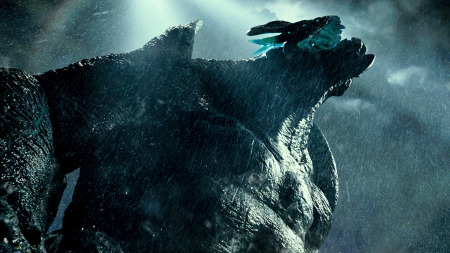
Guillermo del Toro’s extravagant, costly tentpole picture is, of course, a well-publicized love letter to the Japanese genre known as kaiju eiga: the giant monster movies born from the iconic 1954 Godzilla. These quickly descended from the relative sincerity and social messaging of that film (or the contemporaneous American production Them!) into trashy action films that further descended into silly matinee pictures, borne on the wings of the legendarily awful Baby Godzilla, and his soullessly googly eyes. [more...]
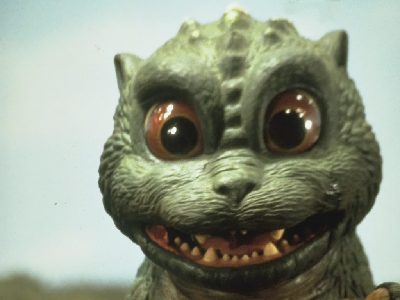 Baby Godzilla!
Baby Godzilla!
As a result, the whole idea of men in rubber monster suits trampling through models of Japanese cities has unaccountably been dismissed as somehow juvenile, which is… completely fair, actually. The later into Toho’s Godzilla franchise we go, the more unapologetically wacky they get, and none of the Big Guy’s competition on either side of the Pacific was ever as classy as he was to start with, so by the time we get to the like of rival studio Daiei’s Gamera films, there’s really not even the fig leaf of respectability: these are fun junk food films.
The question of the day is: what’s wrong with junk food? There’s probably no way to reclaim the kaiju as anything but lighthearted fun, but it’s a mistake to write off these rubber monster rampages as trash just because they’re emphatically unserious. English-language viewers, to be certain, have had an extra reason to think of the films as nonsensical kids’ stuff: until the 2000s, none of the kaiju eiga were available in anything but overdubbed versions that seriously dumbed-down the content specifically to make sure that American kids would have an easier time with the movies, while adding the famous Godzilla dubbing problem of people speaking words so clearly divorced from the movement of their lips that even the most forgiving viewer would have a hard time taking the filmmaking at all seriously. Lately, it’s possibly to get many (though not remotely all, and not necessarily the best) of these films in subtitled prints, but decades of substandard editions have wrought their damage.
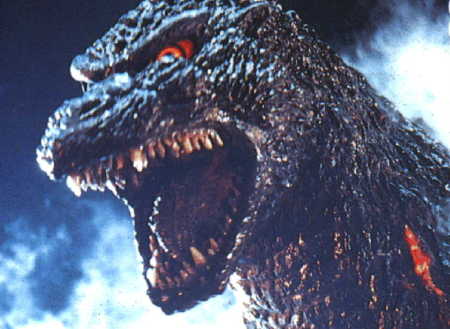
That’s a tremendous pity. High art or not (outside of Godzilla itself, it’s even an open question whether any of the films are “good” by any usefully objective standards), there’s nothing quite as special in quite the same ways as a man in a well-crafted rubber monster suit, and the genre’s reputation for tackiness notwithstanding, most of the top-tier kaiju were actually made with quite a lot of care and love (the many, many B-list films, on the other hand…). Unlike many canonically bad movies, these films’ most ardent fans aren’t operating from a position of irony, mockery, or sarcasm, but of true affection for the characters – not, of course, the panoply of scientists, journalists, chipper little boys and hopelessly sidelined women that make up the human cast, the big beasts trudging around and flattening Tokyo. And that affection isn’t simply because we like to watch cities crumble, but because the designers of the suits for Godzilla, Rodan, Gamera, and the like were creating a very distinctive kind of art. Considering how inflexible their faces were (or in the case of the giant moth Mothra, how inflexible their entire bodies), these monsters have an incredible amount of personality, evoked through the sound design (what monster in all movie history sounds more distinctive than Godzilla), the frequently great music, or even just the way that the stuntmen in the suits lumbered around with commendable dedication to the body language that this giant flying turtle or that three-headed dragon "would" have.
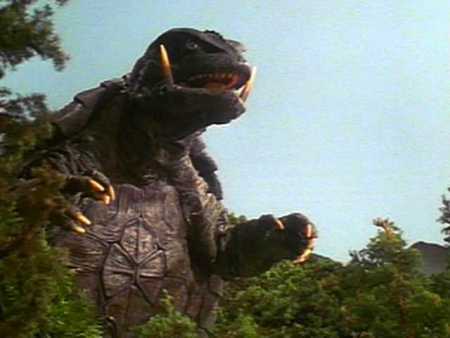
A great kaiju takes its monster seriously, something that is simply not true of virtually any of the American giant monster movies of the ‘50s and ‘60s, where the filmmakers often didn’t even try to hide their boredom with the material. The detail in the filmmaking is like the detail in a well-drawn comic (or, more appropriately, manga): pulpy, ridiculous. But it is still detail, carefully built to insist on the reality of what’s happening onscreen (at their height, the model cities in the Toho kaiju eiga were among the best ever put to film). There’s a gravity to the films that American counterparts lack: think of how the Transformers franchise cheerfully demolished Los Angeles and Chicago in photorealistic splendor, but think also of the totally hollow effect of all that destruction (or, indeed, look no further than this summer’s big Man of Steel debate, as to whether a Superman who’d be so complicit in turning Metropolis into rubble is any Superman at all). Even a truly awful kaiju makes a point of underscoring the reality of the destruction; the common observation is that the first Godzilla was made by and for a culture that had too-recently survived a city-leveling war, but thirty years later that can hardly be the explanation for why even latter-day films in the franchise take the matter of widespread monster damage as a cause for legitimate pathos and sensitivity.
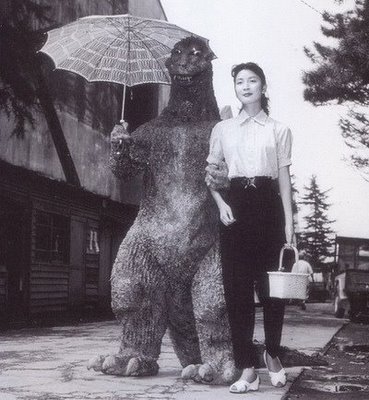
Great seriousness and ditsy matinee fun all wrapped up in one: the kaiju are dopey, sure, but they’re also exactly what we all claim to want out of our popcorn movies. And as it becomes harder and harder to find good summertime fare that’s perfectly okay with committing to an entertainingly silly premise and letting it live in its silliness, I have come to appreciate the charms of these films all the more.
If del Toro’s film can capture even a quarter of the gung-ho energy of his source material, it’s going to be a marvelous bit of summer fluff indeed.